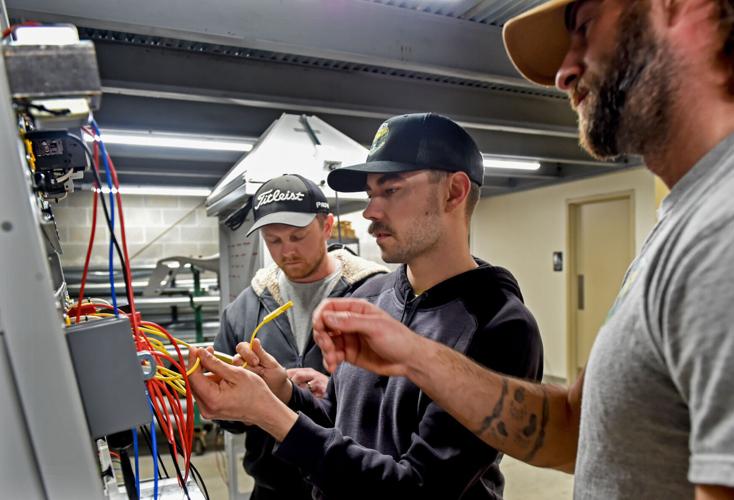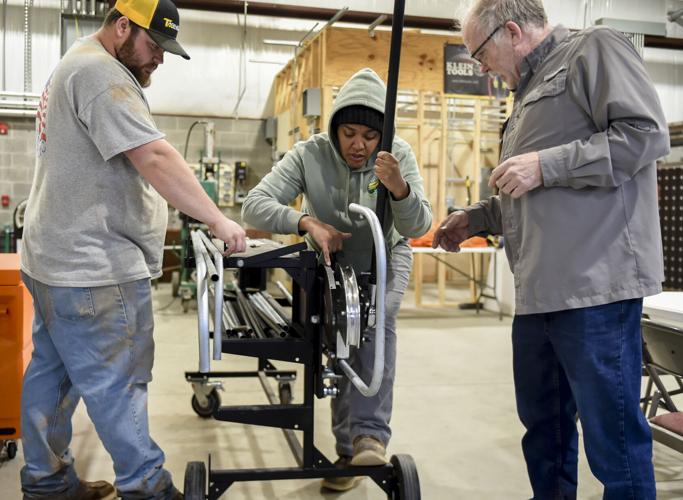CHARLESTON ňňň˝ĘÓƵ” The West Virginia Building and Construction Trades generated an estimated $8.1 billion economic impact between 2022 and 2023, according to a report from the Marshall University Center for Business and Economic Research.
Justin Williams, director of the Affiliated Construction Trades (ACT-ňňň˝ĘÓƵ), said the union represents about 24,000 construction workers across the state in 15 different craft areas, including highway, industrial, commercial, residential, electrical and other types of work.
He said ňňň˝ĘÓƵBCT contracted Marshall University to complete the study to show its worth to the state, between direct wages and deductions going into health care and pensions, its philanthropic events and participation with partner contractors.
ňňň˝ĘÓƵśWhen (thereňňň˝ĘÓƵ™s) something that needs done, thatňňň˝ĘÓƵ™s what we do. Weňňň˝ĘÓƵ™re there for our communities to build it and volunteer in it,ňňň˝ĘÓƵť Williams said.
He said building and construction trades make great careers for people coming out of high school, or people who are looking to transition into a new or better career with good wages and benefits.
Marshallňňň˝ĘÓƵ™s report found ňňň˝ĘÓƵBCT members worked an average of 17.4 million hours annually and contributed $2 billion in total labor income through wages and benefits. The study also found union-negotiated deductions generated $58.3 million in additional economic activity to support workforce training, safety programs and industry advocacy.
ňňň˝ĘÓƵBCT also reported helping sustain more than 36,800 jobs directly and indirectly.
ňňň˝ĘÓƵśWest Virginia really has an opportunity ahead of it to grow, whether it be industry or manufacturing or health care. Industry, thereňňň˝ĘÓƵ™s a lot of opportunity ahead, and we want to be part of those conversations to build it and support those industries and build that work and build a skilled, drug-free workforce that can do that and maintain those facilities,ňňň˝ĘÓƵť Williams said.
Apprenticeship training centers
ňňň˝ĘÓƵBCT offers safety and workforce development initiatives in Parkersburg, Wheeling and Scott Depot and apprenticeship training centers in South Charleston and Huntington where anyone can sign up, no experience required, to learn a trade.
For example, ňňň˝ĘÓƵBCT offers apprenticeships for people wanting to become boilermakers, bricklayers, carpenters, cement masons, electricians, insulators, iron workers, laborers, millwrights, operating engineers, painters, pipe fitters, roofers, sheet metal workers and teamsters.
John Epperly, secretary treasurer for the ňňň˝ĘÓƵBCT, said he joined the International Brotherhood of Electrical Workers apprenticeship program when he graduated high school because his father was also an electrician. For him, entering the training was a ňňň˝ĘÓƵśgood move,ňňň˝ĘÓƵť as everything is included in the free program, meaning he would complete the program without debt.
His program was a five-year program, where there was an opportunity to train with an ňňň˝ĘÓƵśelder craftsmanňňň˝ĘÓƵť that allowed him to get hands-on experience while learning the trade.
ňňň˝ĘÓƵśThe apprenticeship and our training programs for all of our crafts, really, in my opinion, are second to none. I mean only second to the U.S. military,ňňň˝ĘÓƵť Epperly said. ňňň˝ĘÓƵśItňňň˝ĘÓƵ™s extensive training in specific crafts, and it helps you on your true trajectory in your career and gives you all the opportunities because you have all the tools in the trade.ňňň˝ĘÓƵť
Program growth
Dustin Vaughan is the apprenticeship director for the IBEW Local 466 training facility in Charleston, which Epperly said is one of roughly 32 training centers in various crafts throughout the state.
Vaughan said the IBEW Local 466 offers a four-year program, including 720 hours in a classroom and 8,000 hours of on-the-job training. Trainees also start being paid on their first day, making over $20 per hour plus benefits with a 5% raise every six months.
This year, the program took applications up until March 6, but Vaughan said he goes out to career fairs, shelters and adult education programs across the state each year to recruit new ňňň˝ĘÓƵśjourneymenňňň˝ĘÓƵť to start their careers.
Vaughan said there are around 25 to 30 contractors that are signed with the IBEW within its 26-county-wide jurisdiction where apprentices are assigned to ensure they have residential, commercial and industrial experience by the end of their training. On-site, the IBEW has several classrooms, as well as a hands-on training center.
Vaughan, whoňňň˝ĘÓƵ™s been with the IBEW for almost 20 years, used to be in the field, but said he now loves getting the word out about the IBEW. Over the last three years, he said the program has doubled in size.
ňňň˝ĘÓƵśYou have the ... need for more people, and so therefore that means that the work in this area is abundant,ňňň˝ĘÓƵť Vaughan said, and therefore the program also changes every three years.
Three years ago, Vaughan said his program had about 42 apprentices, and they are now up to 83, or about eight to 12 in a class. He said classes are typically capped off and have a waiting list, but are based on manpower needs.
Overall, he said about 46% of electrical work in the United States is done by union trades.
ňňň˝ĘÓƵśIn the last three years, West Virginia has grown immensely as far as construction goes,ňňň˝ĘÓƵť Vaughan said.
ňňň˝ĘÓƵśOn the economic development side, theyňňň˝ĘÓƵ™re wondering how many people you have there already capable of doing the work, and so the better our numbers are there, as far as trained, qualified electricians, or construction crafts, period, I think that that is definitely looked at, as far as somebody want to come to West Virginia and grow a corporation here.ňňň˝ĘÓƵť
Apprenticeships require applicants to be at least 18, have a high school diploma or GED equivalent, a resident of West Virginia for at least one year, a valid in-state driversňňň˝ĘÓƵ™ license, and pass a drug test.
More information on all of the apprenticeships offered by the ňňň˝ĘÓƵBCT is available at .











